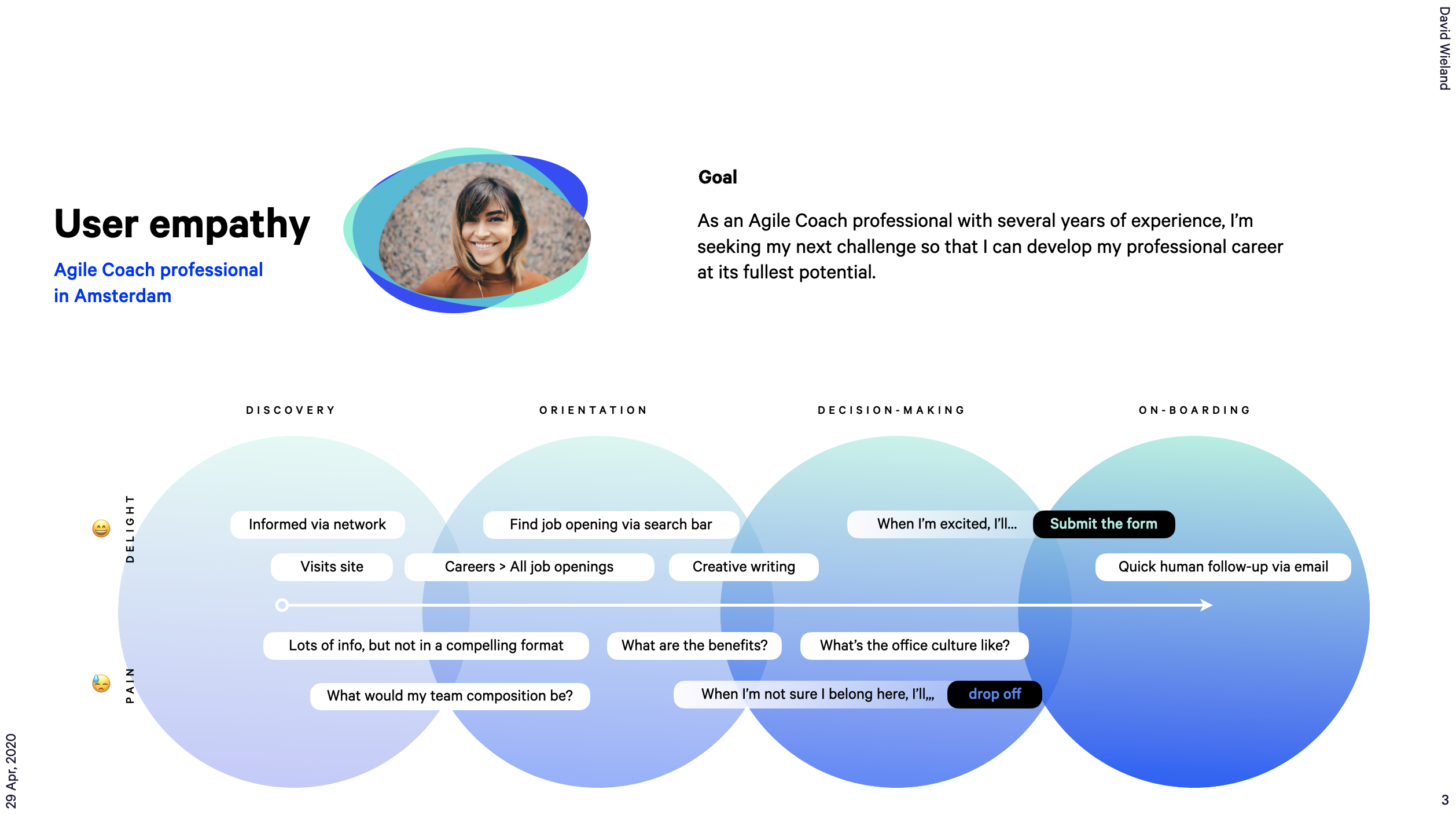
User empathy map
Supplementary to the user profile, this map tells you exactly what kind of experience your users are facing.
Collecting valuable insights
As with the user profile, this is only truly valuable if you've actually spoken with users. If you're working on a redesign, the best thing you could do is set users in front of whatever it is you're redesigning, and give them a specific instruction, such as "find a new job and write an application for it", or "figure out if you could get a mortgage for $150,000". While using the production, let them speak out loud: what's happening? Why did they click somewhere? What are they looking for? What surprised them, frustrated them, or caught them off-guard?
I find it helpful to map these findings in a user empathy map which tracks their important decisions, achievements and frustrations.
Why is this useful?
You're collecting a bunch of important findings in a presentable format. This is helpful because it's presentable to stakeholders: you could print them off and pin them to your war room for easy reference. It reminds you of intricate steps or illogical behaviours your users may display that you might forget during your design stages.
Services
User interface design
User research
Information architecture
Prototyping
Content strategy
Project management
Clients
Cathay Pacific
City University Hong Kong
Chinese University of Hong Kong
Good Financial
Hong Kong University
Mercedes
Starr Insurance
Swire Hong Kong
Education
Bachelor of Interactive Media Design at the Royal Academy of Arts, The Hague
Contact
davidwieland@gmail.com
+31641785117
Lovingly made with Semplice in Diemen, The Netherlands
Set in Calibre by Klim Type & Make Sans by Aceler Chua & Grayscale Hong Kong.
© 2020 David Wieland. You have permission to use all resources for personal and commercial purposes.
All other content rights reserved.